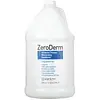What's inside
What's inside
 Key Ingredients
Key Ingredients

 Benefits
Benefits

 Concerns
Concerns

 Ingredients Side-by-side
Ingredients Side-by-side

Water
Skin ConditioningCetearyl Alcohol
EmollientGlycerin
HumectantCaprylic/Capric Triglyceride
MaskingHelianthus Annuus Seed Oil
EmollientPEG-40 Castor Oil
EmulsifyingStearalkonium Chloride
PreservativeGuar Hydroxypropyltrimonium Chloride
Skin ConditioningButyrospermum Parkii Butter
Skin ConditioningPanthenol
Skin ConditioningTocopherol
AntioxidantAloe Barbadensis Leaf Juice
Skin ConditioningLinum Usitatissimum Seed Extract
PerfumingCitric Acid
BufferingPhenoxyethanol
PreservativeCaprylyl Glycol
EmollientWater, Cetearyl Alcohol, Glycerin, Caprylic/Capric Triglyceride, Helianthus Annuus Seed Oil, PEG-40 Castor Oil, Stearalkonium Chloride, Guar Hydroxypropyltrimonium Chloride, Butyrospermum Parkii Butter, Panthenol, Tocopherol, Aloe Barbadensis Leaf Juice, Linum Usitatissimum Seed Extract, Citric Acid, Phenoxyethanol, Caprylyl Glycol
Water
Skin ConditioningCetearyl Alcohol
EmollientBehentrimonium Chloride
PreservativeGlycerin
HumectantPEG-180
HumectantAmodimethicone
Cetyl Esters
EmollientCeramide NP
Skin ConditioningCeramide AP
Skin ConditioningCeramide EOP
Skin ConditioningCarbomer
Emulsion StabilisingNiacinamide
SmoothingTrideceth-6
EmulsifyingTriethyl Citrate
MaskingSodium Lauroyl Lactylate
EmulsifyingSodium Hyaluronate
HumectantSodium Phosphate
BufferingCholesterol
EmollientChlorhexidine Dihydrochloride
AntimicrobialDisodium Phosphate
BufferingIsopropyl Alcohol
SolventHydroxyethylcellulose
Emulsion StabilisingCetrimonium Chloride
AntimicrobialCaprylyl Glycol
EmollientPhytosphingosine
Skin ConditioningXanthan Gum
EmulsifyingPolysorbate 60
EmulsifyingBenzoic Acid
MaskingWater, Cetearyl Alcohol, Behentrimonium Chloride, Glycerin, PEG-180, Amodimethicone, Cetyl Esters, Ceramide NP, Ceramide AP, Ceramide EOP, Carbomer, Niacinamide, Trideceth-6, Triethyl Citrate, Sodium Lauroyl Lactylate, Sodium Hyaluronate, Sodium Phosphate, Cholesterol, Chlorhexidine Dihydrochloride, Disodium Phosphate, Isopropyl Alcohol, Hydroxyethylcellulose, Cetrimonium Chloride, Caprylyl Glycol, Phytosphingosine, Xanthan Gum, Polysorbate 60, Benzoic Acid
 Reviews
Reviews

Ingredients Explained
These ingredients are found in both products.
Ingredients higher up in an ingredient list are typically present in a larger amount.
Caprylyl Glycol is a humectant and emollient, meaning it attracts and preserves moisture.
It is a common ingredient in many products, especially those designed to hydrate skin. The primary benefits are retaining moisture, skin softening, and promoting a healthy skin barrier.
Though Caprylyl Glycol is an alcohol derived from fatty acids, it is not the kind that can dry out skin.
This ingredient is also used as a preservative to extend the life of products. It has slight antimicrobial properties.
Learn more about Caprylyl GlycolCetearyl alcohol is a mixture of two fatty alcohols: cetyl alcohol and stearyl alcohol. It is mainly used as an emulsifier. Emulsifiers help prevent the separation of oils and products. Due to its composition, it can also be used to thicken a product or help create foam.
Cetearyl alcohol is an emollient. Emollients help soothe and hydrate the skin by trapping moisture.
Studies show Cetearyl alcohol is non-toxic and non-irritating. The FDA allows products labeled "alcohol-free" to have fatty alcohols.
This ingredient is usually derived from plant oils such as palm, vegetable, or coconut oils. There is debate on whether this ingredient will cause acne.
Due to the fatty acid base, this ingredient may not be Malassezia folliculitis safe.
Learn more about Cetearyl AlcoholGlycerin is already naturally found in your skin. It helps moisturize and protect your skin.
A study from 2016 found glycerin to be more effective as a humectant than AHAs and hyaluronic acid.
As a humectant, it helps the skin stay hydrated by pulling moisture to your skin. The low molecular weight of glycerin allows it to pull moisture into the deeper layers of your skin.
Hydrated skin improves your skin barrier; Your skin barrier helps protect against irritants and bacteria.
Glycerin has also been found to have antimicrobial and antiviral properties. Due to these properties, glycerin is often used in wound and burn treatments.
In cosmetics, glycerin is usually derived from plants such as soybean or palm. However, it can also be sourced from animals, such as tallow or animal fat.
This ingredient is organic, colorless, odorless, and non-toxic.
Glycerin is the name for this ingredient in American English. British English uses Glycerol/Glycerine.
Learn more about GlycerinWater. It's the most common cosmetic ingredient of all. You'll usually see it at the top of ingredient lists, meaning that it makes up the largest part of the product.
So why is it so popular? Water most often acts as a solvent - this means that it helps dissolve other ingredients into the formulation.
You'll also recognize water as that liquid we all need to stay alive. If you see this, drink a glass of water. Stay hydrated!
Learn more about Water